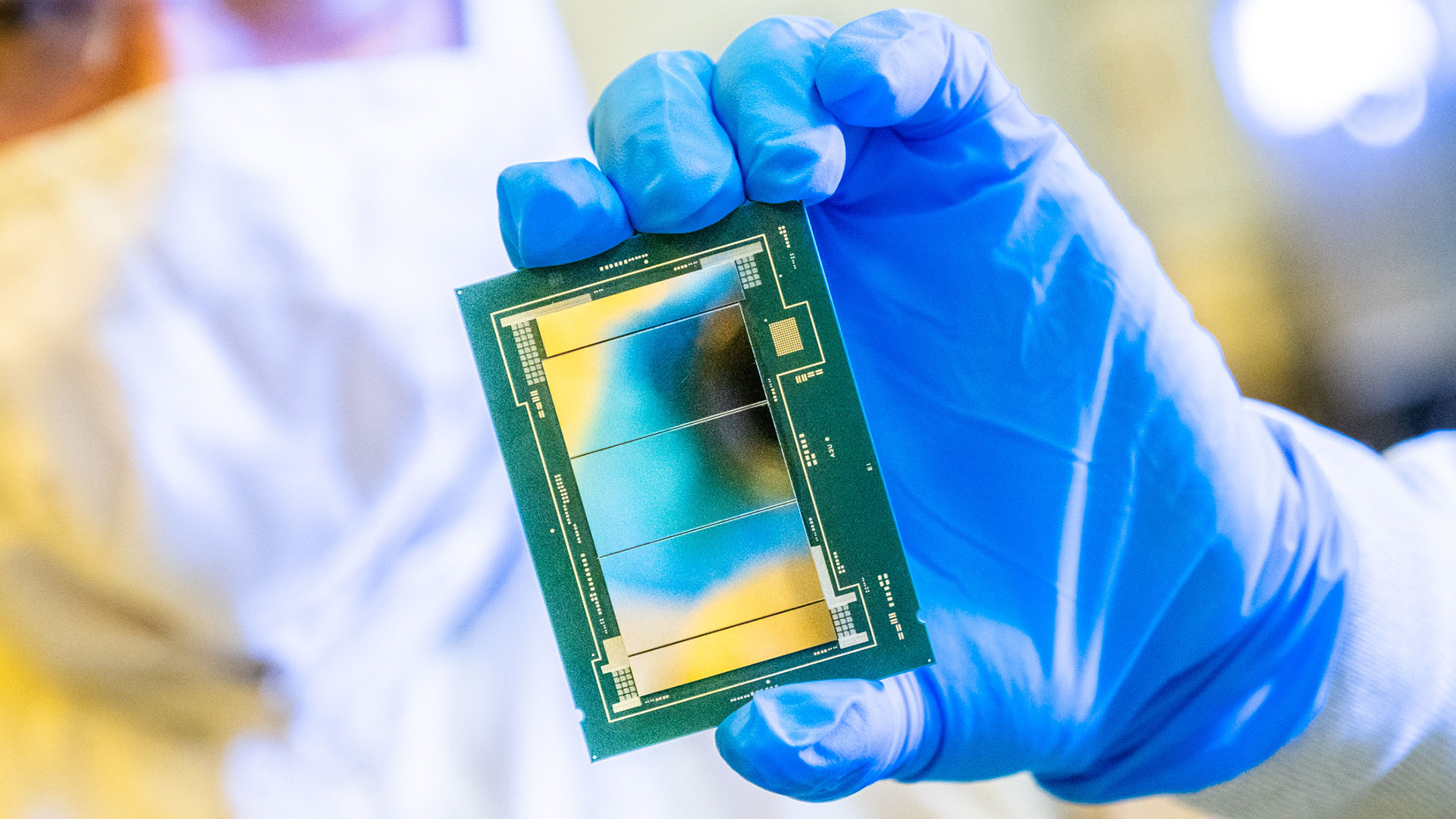Intel hamstrung by supply shortages across its business, including production capacity — says it will prioritize data center CPUs over consumer chips, warns of price hikes

Demand for Intel's processors for client and data center applications was on the rise in the third quarter of 2025, but the company could not fully capitalize on it as it faced numerous supply shortages across its business, which included shortages of its own production capacity and an industry-wide shortage of substrates, which will persist into 2026. The company is prioritizing the supply of data center CPUs, but going forward, it also plans to adjust the pricing of its products, which means increased prices of previous-generation client CPUs.
"Capacity constraints, especially on Intel 10 and Intel 7, limited our ability to fully meet demand in Q3 for both data center and client products," said David Zinsner, chief financial officer of Intel, during the company's conference call with analysts and investors.
Raptor Lake in tight supply
While the Intel 7 (formerly 10nm Enhanced SuperFin) process technology introduced in 2021 – 2022 looks ancient, it still packs quite a punch in terms of performance capability and Intel uses it to produce a host of CPUs, including 13th and 14th Generation Core 'Raptor Lake' CPUs as well as I/O die for Xeon 6 'Granite Rapids' CPUs and 5th Generation Xeon Scalable 'Emerald Rapids' processors that are still in demand. Recently, prices of Intel's Raptor Lake processors rose amid supply constraints up as demand for these CPUs is still high three years after the introduction.
As the company has no plans to expand capacities for previous-generation nodes, but foresees demand for Intel 7 and Intel 10-based products to remain strong in the coming quarters, it expects these CPUs to be in short supply well into 2026. Furthermore, to capitalize on it, Intel intends to adjust pricing and produce more high-end SKUs.
"Given the current tight capacity environment, which we expect [to] persist into 2026, we are working closely with customers to maximize our available output, including adjusting pricing and mix," said Zinsner.
As for Intel 10 (formerly 10nm SuperFin), it is hard to tell which of Intel's broadly available CPUs use it, but Intel probably ships a boatload of long-life-cycle products made using this technology under long-term supply contracts.
Diverting wafers to data center CPUs
As Intel's Xeon 6 'Granite Rapids' uses an I/O die made on Intel 7 process technology, insufficient capacity hits the company's ability to ship enough expensive data center processors. On the one hand, this might be good news for Intel as demand for its server CPUs is back and it can sell them without a discount or even at a higher price. However, if it does not have enough I/O dies, it cannot ship processors at all. Therefore, it has to divert capacity to data center CPUs, thus cutting the supply of client CPUs, which is one of the reasons why Raptor Lake processors got more expensive recently and will likely gain price in the coming months.
Get Tom's Hardware's best news and in-depth reviews, straight to your inbox.
"[In Q4] we expect [client computing group] to be down modestly and [data center and AI group] [to be] up strongly sequentially as we prioritize wafer capacity for server shipments over entry-level client parts," said Zinsner.
Intel's decision to sacrifice some lower-end client CPU volume to keep server CPU customers supplied — particularly hyperscalers and AI infrastructure buyers — has a great rationale as data center CPUs are sold at thousands of dollars a unit, whereas even the highest-end client CPU is hardly sold at $500 - $600. Given the cost of semiconductor fabs and limited production capacity at Intel's 7-capable lines, Intel's management is forced to triage output toward the most profitable products.
Shortages are here to last
In addition to insufficient Intel 7-capable capacity, Intel also blames the shortage of substrates used for CPU packages for the tight supply of its processors, which further complicates the company's supply chain.
" There is also shortages even beyond our specific challenges on the foundry side," said Intel CFO. "I think there's widely reported substrate shortages, for example. So, I think the demand, you know, there is a lot of caution coming into the year, I think across the board."
In general, Intel warns that shortages of its processors will persist through 2026. On the client side, this is conditioned by the slow 18A ramp and decent demand for Raptor Lake processors, whereas on the data center side, it will be driven by insufficient Intel 7 capacity amid the continuous ramp of Xeon 6-series products. The shortages are expected to worsen in Q1, but then there may be some relief.
"We may actually be at our peak in terms of shortages in the first quarter because we have lived through the Q3 and Q4 with a little bit of inventory to help us and just cranking the output as much as we could with the factory," said Zinsner.

Follow Tom's Hardware on Google News, or add us as a preferred source, to get our latest news, analysis, & reviews in your feeds.

Anton Shilov is a contributing writer at Tom’s Hardware. Over the past couple of decades, he has covered everything from CPUs and GPUs to supercomputers and from modern process technologies and latest fab tools to high-tech industry trends.